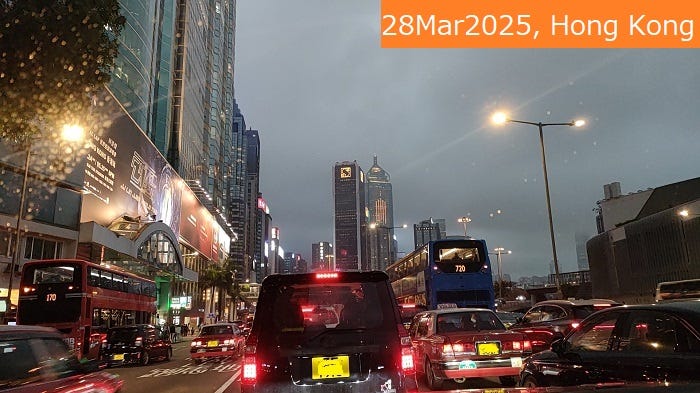<essays> Real Cultural Chaos Cities in Hong Kong and Shenzhen, China 2025-3
Chisai has been to Hong Kong and Shenzhen, China for the first time in five years! And she tells you the report in four parts in a series!
I'm at a point where I actively avoid Facebook posts about the Japanese art scene. Why? Because the content is perpetually stuck in a loop. It's the same exhibitions, the same art events as last year, and often, works that are identical to those from a decade ago—perhaps a different color or size, but fundamentally unchanged. This leads to an abundance of phrases like "this year too!" which, frankly, are infuriatingly stagnant. To me, Japanese people still posting on Facebook in Japanese are akin to those who exclusively read physical newspapers today – they’re living in a different era.
This ingrained sense of stasis in Japan is precisely what makes Hong Kong and Shenzhen feel utterly chaotic to me. The irony is, the locals themselves don't perceive it as chaos; it’s simply their reality. Yet, coming from what I'd call an "analog world" like Japan, I'm sure you, my readers, are keen to understand just how truly chaotic it felt. My recent visit to Art Basel Hong Kong offered a stark reminder of this disconnect. It felt like any other art fair, and the Japanese galleries were showcasing works that hadn't evolved in 10, even 20 years – meticulously rendered paintings or pieces by a handful of established Japanese artists.
It wasn't just the Japanese contingent; the entire fair seemed to be dominated by artists whose names evoke an immediate "I know them!" from art history books or prestigious art magazines. This is perhaps understandable for an art fair, where buyers typically seek out recognizable names. However, this prevalence of the familiar made me bypass M+ in Hong Kong, despite its collection. Why? Because M+ was featuring Picasso. As a Japanese individual fortunate enough to have the Ohara Museum of Art (in Japan) nearby, where I used to skip geography class over 30 years ago just to see Picasso, the thought of flying all the way to M+ just for Picasso seemed redundant.
But then the "chaos" made me reconsider. My reaction was a privilege. For many in Hong Kong, seeing a Picasso at M+ could be a groundbreaking experience, a first encounter outside of textbooks. This highlights a crucial phenomenon in art, which I call the "leapfrogging" phenomenon – much like how some developing countries bypassed landlines to jump directly to mobile phones and the internet, or even skip traditional banking for mobile money. Art, too, can experience such seismic shifts. This leads to a fundamental question: From a Japan whose art historical narrative, particularly since the end of its isolation, has been so heavily dominated by Western art – often subsuming its own local art history within that framework – what then truly defines Hong Kong's art identity?
~~~ <essays> Real Cultural Chaos Cities in Hong Kong and Shenzhen, China 2025-2
<essays> Real Cultural Chaos Cities in Hong Kong and Shenzhen, China 2025-4 ~~~






